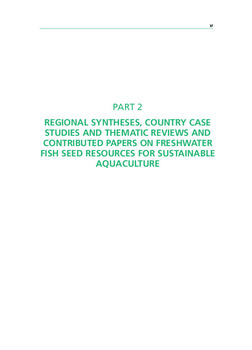Freshwater fish seed resources and supply: Africa regional synthesis

Citation
Brummett, R.E. (2007). Freshwater fish seed resources and supply: Africa regional synthesis. p. 41-58. In: M.G. Bondad-Reantaso (ed.). Assessment of freshwater fish seed resources for sustainable aquaculture. FAO fisheries technical paper. no. 501. Rome, FAO. 628 p.
The availability and quality of fingerlings for stocking in aquaculture ponds have repeatedly been identified as a key constraint to the development of aquaculture in Africa. Government hatcheries have generally failed to achieve sustainability and the private sector is impeded by the lack of marketing information and appropriate technological assistance. At present, the main aquaculture species in the continent are Nile tilapia (Oreochromis niloticus) and the African sharptooth catfish (Clarias gariepinus). While the tilapias are easy to reproduce on-farm, poor broodstock management had resulted in reduced growth rates in many captive populations. Catfish are mostly reproduced in hatcheries, but availability of broodstock and high mortality rates in larvae are key problems still requiring research. Of the countries reviewed, Egypt (1.2 billion tilapia and 250 million carp fingerlings produced) and Nigeria (30 million fingerlings produced) report the highest number of modern private commercial hatcheries, although most of these are unregulated and lack accreditation and certification systems. Ghana, Cameroon, Uganda and Zimbabwe rely almost entirely on semi-commercial systems producing unreliable quantities and quality of seed. Interventions to improve the quality of extension services, make credit more available and build partnerships between public and private sectors to address key researchable topics are recommended to improve the availability of fish seed to African fish farmers.
Permalink
Date Available
Type
Research Themes
Language